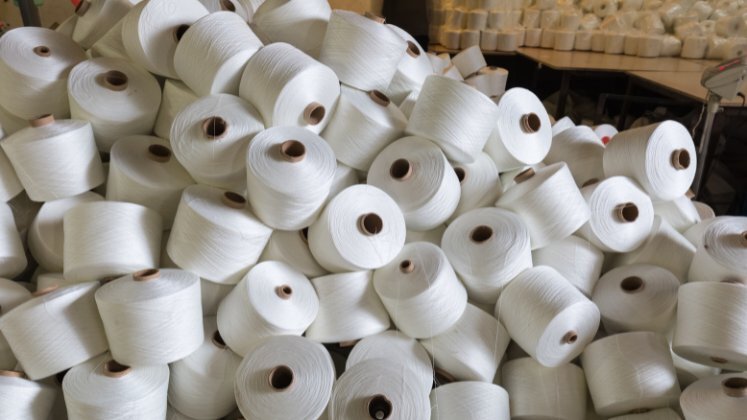 Bangladesh’s knit yarn market has experienced another round of price declines in May 2025, primarily driven by reduced Government incentives for local spinners, increased import flows, and stiff competition from Indian suppliers.
Bangladesh’s knit yarn market has experienced another round of price declines in May 2025, primarily driven by reduced Government incentives for local spinners, increased import flows, and stiff competition from Indian suppliers.
Market data shows that the price for 30/1 NE cotton carded yarn, one of the most widely used counts in the country’s knitwear sector, fell to US $ 3.00 per kg for 100 per cent cotton carded, compared to approximately US $ 3.00 to US $ 3.05 per kg in the previous month. Similarly, prices for 100 per cent Cotton Carded BCI and CmiA yarn stood at US $ 3.05 per kg, while Carded IC2 (GOTS) reached US $ 3.35 per kg and Carded OCS/GOTS was quoted at US $ 3.65 per kg. The recycled version, 80 per cent cotton with 20 per cent recycled content, traded at US $ 3.20 per kg.
In the combed yarn segment, 30/1 NE 100 per cent Cotton Combed was priced at US $ 3.40 per kg, while Combed BCI and Combed CmiA were both at US $ 3.45 per kg. Higher-end Combed IC2 (GOTS) yarn reached US $ 3.75 per kg, and Combed OCS/GOTS stood at US $ 4.05 per kg.
A detailed look at current prices shows:
100 per cent Cotton Carded Yarn (30/1 NE)
- 100 per cent Cotton Carded: US $ 3.00/kg
- Carded BCI: US $ 3.05/kg
- Carded CmiA: US $ 3.05/kg
- Carded IC2 (GOTS): US $ 3.35/kg
- Carded OCS/GOTS: US $ 3.65/kg
- Carded Recycled Yarn (GRS): US $ 3.20/kg
100 per cent Cotton Combed Yarn (30/1 NE)
- Combed: US $ 3.40/kg
- Combed BCI: US $ 3.45/kg
- Combed CmiA: US $ 3.45/kg
- Combed IC2 (GOTS): US $ 3.75/kg
- Combed OCS/GOTS: US $ 4.05/kg
Market analysts forecast that yarn prices may continue to soften in the coming months, potentially dropping another US $ 0.10 per kg if the current oversupply persists. However, any uptick in demand could stabilize prices, at least temporarily.
Industry sources are also closely watching import trends, as lower-cost Indian yarn continues to flood the market, undermining domestic producers’ competitiveness. Without renewed government intervention or a rebound in demand, Bangladesh’s spinning sector may continue to face margin pressure in the near term.






